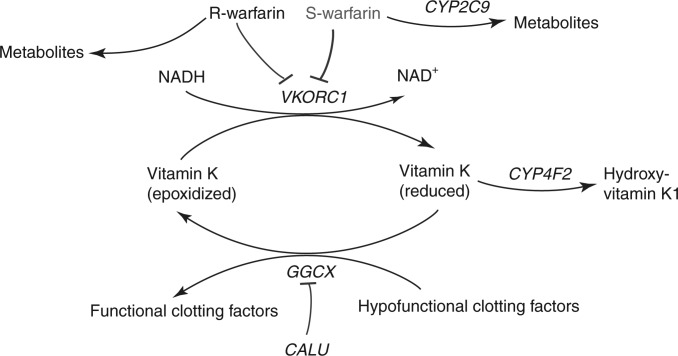Figure 1.
Schematic representation of warfarin metabolism and its mechanism of action. Warfarin is administered via a racemic mixture of the R- and S- stereoisomers. S-warfarin is three to five times more potent than R-warfarin and is metabolized predominantly to 7- and 6-hydroxyl metabolites via CYP2C9. Warfarin exerts its anticoagulant effect through inhibition of its molecular target, VKORC1, which in turn limits availability of reduced vitamin K, leading to decreased formation of functionally active clotting factors. these clotting factors are glycoproteins that are postranslationally carboxylated by γ-glutamyl carboxylase (GGCX) to Gla-containing proteins. the endoplasmic reticulum chaperone protein calumenin (CALU) can bind to and inhibit GGCX activity. the metabolism of reduced vitamin K to hydroxyvitamin K1 is catalyzed by CYP4F2, which removes vitamin K from the vitamin K cycle. Adapted from the warfarin pharmacokinetics (PK) and pharmacodynamics (PD) pathways provided at PharmGKB, <http://www.pharmgkb.org/do/serve?objId=PA451906&objcls=Drug#tabview=tab4>.

